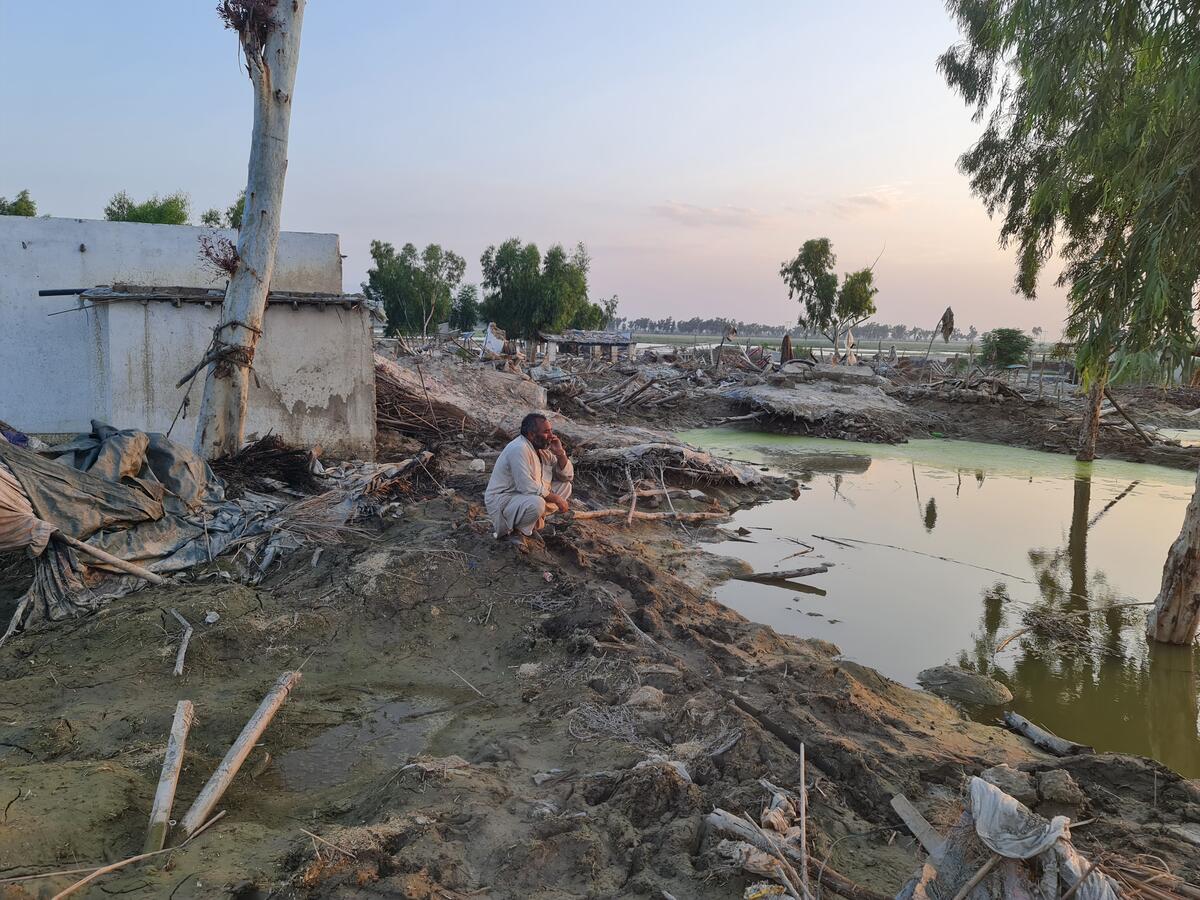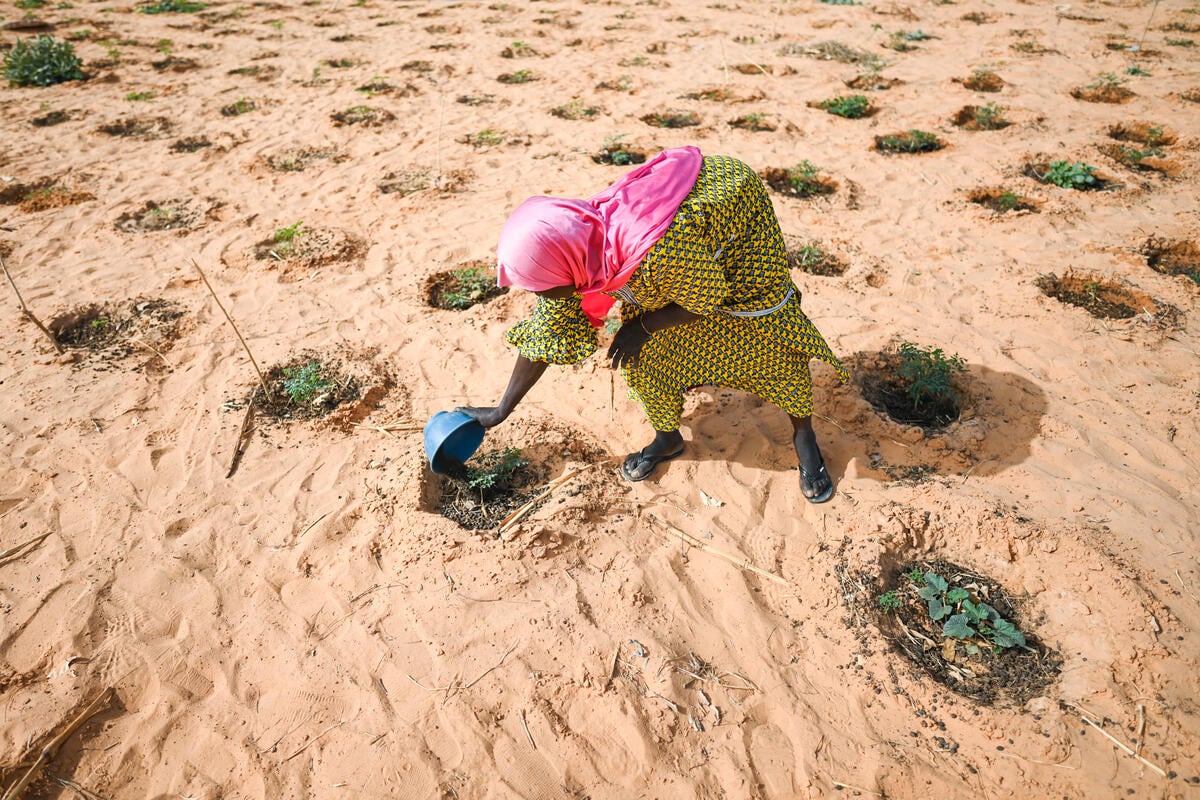Nowhere to hide from climate change in Kenyan refugee camp
Nowhere to hide from climate change in Kenyan refugee camp

DADAAB, Kenya, December 18 (UNHCR) - Dulane Jama and his family suffered in silence for three years in a remote corner of eastern Ethiopia before he finally decided to go and look for a safe place to live before they all died.
After an arduous and dangerous trek across Somalia, he ended up about four months ago at Dadaab, a sprawling and overcrowded refugee complex in north-east Kenya housing almost 300,000 refugees. Most are Somalis who have fled conflict or persecution in their troubled homeland.
Dulane is slightly different - he and his family have been forced to flee by climate change and general insecurity. But more and more people are fleeing for a similar mix of reasons.
Conflict in the region, especially in Somalia, has made it more difficult to manage the effects of climate change. Demand for precious and scarce resources such as water and grazing land is leading to conflict, followed by displacement, more environmental degradation and more conflict.
The 44-year-old Dulane is a member of the Marehan, an ethnic Somali clan whose members live all over the region. He, his wife and their 12 children raised livestock near the town of Korahay, close to the border with Somalia. Then one day, the rains stopped coming and life became harder and harder.
"There have been drought conditions in Ethiopia for the past three years," he said with a bitter smile. "Originally I had 50 camels, 30 cattle and 35 sheep and goats, but they are all dead now," Dulane added. The situation was dire, so he decided to make his way to Somalia and then get the family to follow, but because of the general insecurity he ended up going all the way to Dadaab.
Dulane realized that the weather was at the root of most of his problems, but he had no idea that the abnormal weather conditions were due to climate change. Indeed, he had no idea what climate change meant.
And having escaped his drought-ridden home region and reached Dadaab, he and his family now face another feature of climate change - flooding. Meteorologists fear that torrential El Nino rains, a phenomenon caused by the periodic warming of the oceans, will once more cause widespread flooding over a wide area in eastern Africa this year and in early 2010.
UNHCR and its partners are on an emergency preparedness footing for the potential effects of flooding, including the mass outbreak of diarrhoea, water-borne diseases and cholera in the congested camps. El Nino rains have struck Dadaab before, causing turmoil and destruction in 1997, 2003 and 2006 and causing people to move to safer areas.
Meanwhile, much of northern Kenya, is suffering from the same drought affecting Dulane's home area in Ethiopia and parts of south-central Somalia. Kenya's Crisis Response Centre reported earlier this month that 3.8 million Kenyans were facing starvation as a result of a lack of rain over the past two years.
Extreme climatic events such as flooding, soaring heat, storms and drought are on the rise in Africa. Temperature increase and its effect on crop production has been linked to an upsurge in conflict in Africa over the past decade.
Dealing with extreme climate conditions and their after-effects is often beyond the scope and capacity of humanitarian agencies, but UNHCR and its partners are working hard to mitigate the short-term effects in places like Dadaab while also putting in place more long-term strategic projects.
"UNHCR is addressing the immediate El Nino response needs by sandbagging vital areas of the camps, such as tapstands, boreholes, hospitals and health posts, as well as improving drainage in critical locations," explained UNHCR's Dinesh Shrestha, a water and climate specialist who recently spent two months in Dadaab.
He added that the refugee agency was investigating longer-term strategic projects, including reforestation, water harvesting and the possibility of using water from swamps, dams and shallow wells to meet the needs of livestock kept by the refugees and by the local communities around Dadaab.
"These projects require time, effort and donor support," noted Dinesh, who was in Dadaab's Ifo camp on December 16 when a two-hour downpour left areas of the camp under many feet of water and forced refugees to stow their aid packs up trees and make their way through waist-high water.
Meanwhile, Dulane's mind is on the present and he takes a pragmatic approach to the possibility of floods. "If it is the will of God that this happens, then it will happen."
By Andy Needham in Dadaab, Kenya








